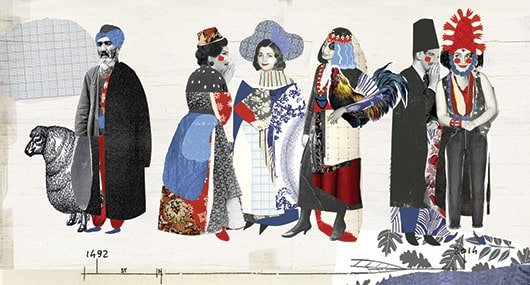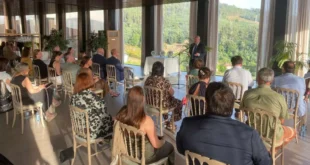Bryan Kirschen is out to preserve and protect this ancient language.

For Jewish people, nobody speaks truth like their mothers. Especially when they say things like “Ken kozina vyernes kome shabad.”
No, it isn’t Yiddish. Nor Hebrew. It’s Ladino, the ancient language that began developing among Sephardic Jews in the 16th century and which today is spoken by fewer than 100,000 people. Literally translated, the line means, “He who cooks on Friday will eat on Saturday.” As vernacular, it’s an admonishment to look ahead, to prepare for the future.
Bryan Kirschen Ph.D. ’14 is taking that homily to heart. His mission: Preserve and protect Ladino, Old Spanish infused by linguistic elements drawn from where Sephardim (Hebrew for “Jews of Spain”) resettled after being driven out of Spain and Portugal by those nations’ Catholic monarchs in the 15th century. The Sephardim made their way to North Africa, France and parts of the old Ottoman Empire (Greece, the Balkans and Turkey).
Kirschen teaches Ladino to UCLA students and has taught Sephardic language and culture to small groups of Angelenos at the Skirball Cultural Center. Four years ago, he co-founded ucLADINO, an organization dedicated to the Judeo-Spanish language that puts on weekly workshops, quarterly lectures and an annual symposium that draws Ladino speakers from around the world.
UNESCO categorizes Ladino as extremely endangered, but Kirschen hopes the language might be experiencing a bit of a revival. The U.S. Census has found only 125 Ladino speakers in the U.S., while Kirschen estimates there are about 100 in California and perhaps twice that many in both Seattle and New York.
“The work Bryan has done with ucLADINO is nothing short of visionary, insofar as he has brought the attention of students and the wider UCLA community to the history, culture and present-day endangered state of the Ladino language,” says Sarah Abrevaya Stein, UCLA professor of history and holder of the Maurice Amado Chair in Sephardic Studies.
Kirschen studied Spanish, Hebrew and ancient Greek in high school, learned Arabic in college, and later added Portuguese, Italian and Ladino in grad school.
“We need not just those new to Ladino, but [also] the generations that follow its aging speakers to learn the language of their forebears,” he says.
By Robin Keats – Published Jul 1, 2015 8:00 AM
Source: UCLA Magazine
 eSefarad Noticias del Mundo Sefaradi
eSefarad Noticias del Mundo Sefaradi

